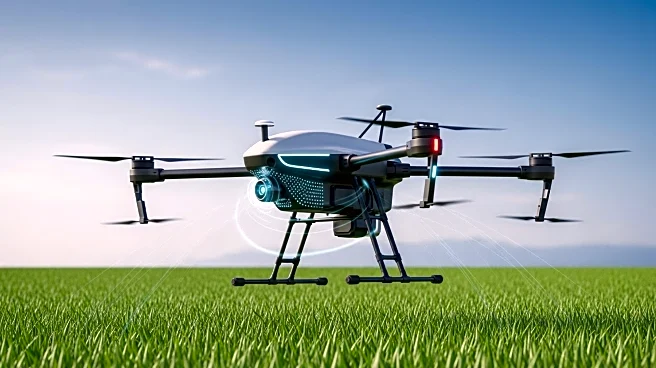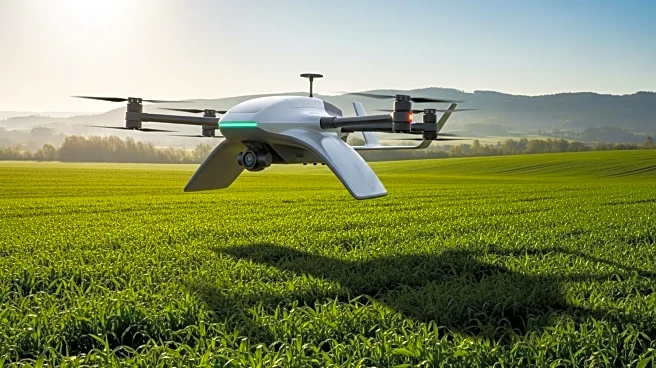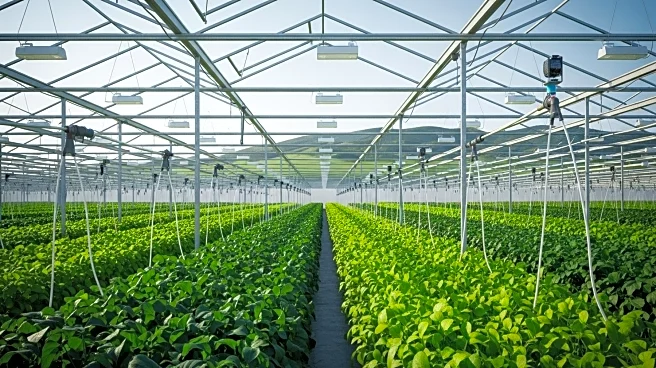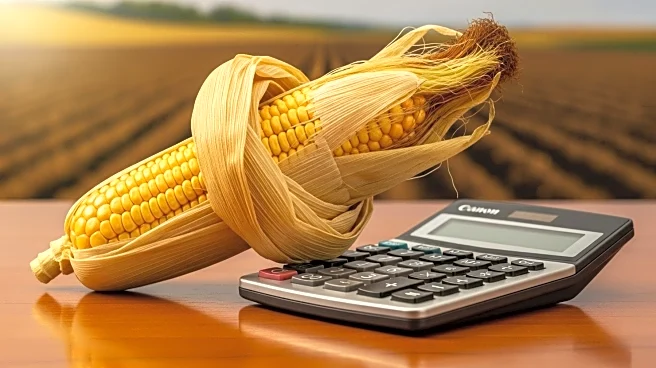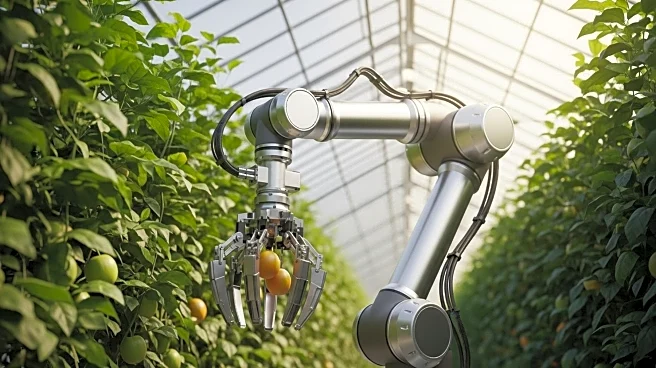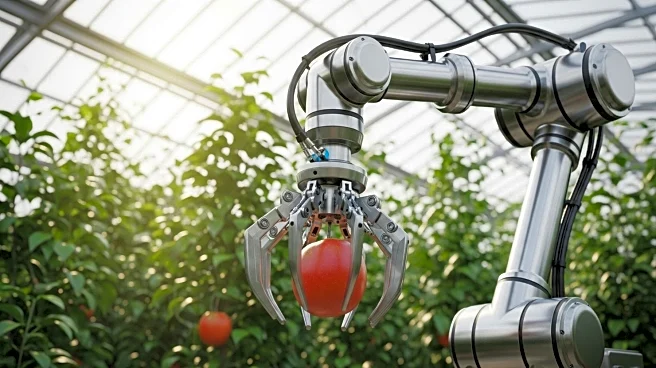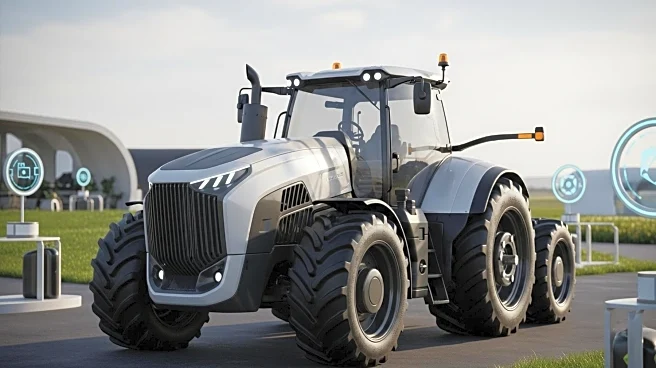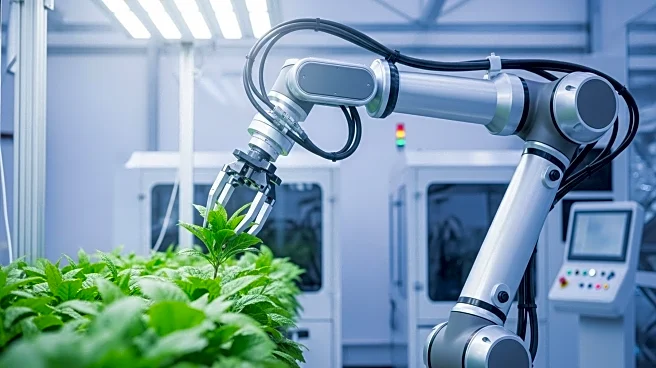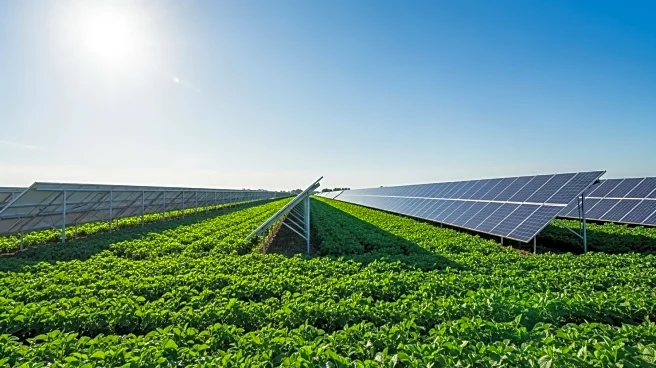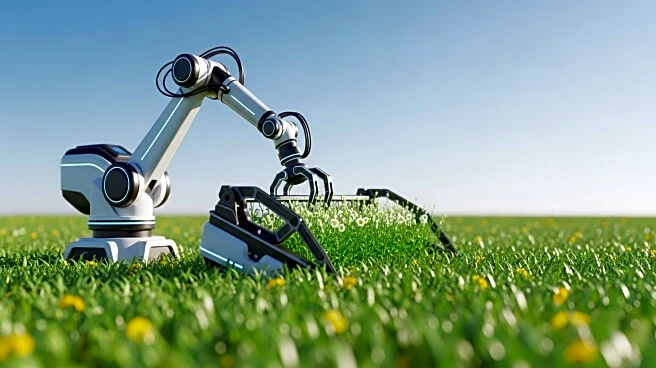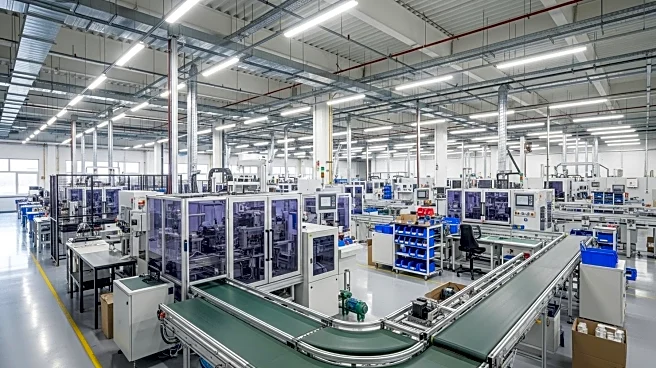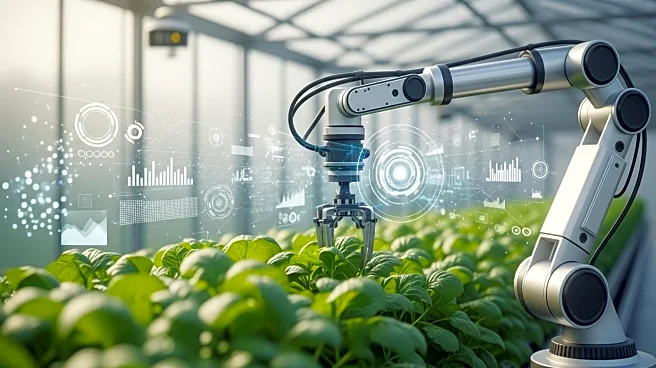What is the story about?
What's Happening?
The agricultural drones market is projected to grow significantly, reaching $5.8 billion by 2033. These drones are transforming modern farming by providing data-driven solutions that enhance crop health, reduce labor costs, and improve yields. They are used for crop monitoring, targeted spraying, soil analysis, and irrigation management. The market's growth is driven by the demand for sustainable practices and high-yield crops. Technological advancements, such as AI integration, are enabling drones to perform autonomous crop assessments and provide actionable insights for irrigation and fertilization.
Why It's Important?
The expansion of the agricultural drones market signifies a major shift towards precision agriculture, which is crucial for meeting the growing global food demand sustainably. By optimizing resource use and reducing chemical inputs, drones help farmers increase productivity while minimizing environmental impact. This technological advancement supports the U.S. agricultural sector's efforts to enhance efficiency and sustainability, potentially leading to increased competitiveness in the global market.
What's Next?
As the market for agricultural drones continues to grow, further innovations in AI and IoT connectivity are expected. These advancements will likely lead to more sophisticated drone capabilities, enabling even greater precision in farming practices. Additionally, regulatory support and incentives for sustainable farming practices may further accelerate the adoption of drone technology. Small and medium-sized farms are expected to increasingly adopt cost-effective drone solutions, while research institutions will explore new applications in crop management.
Beyond the Headlines
The widespread adoption of agricultural drones raises environmental concerns, such as battery disposal and electronic waste. Manufacturers are addressing these issues by developing eco-friendly materials and modular battery designs. Governments are also incentivizing sustainable practices to ensure that the benefits of drone technology align with environmental conservation goals. This highlights the need for a balanced approach that considers both technological advancement and environmental responsibility.
AI Generated Content
Do you find this article useful?
